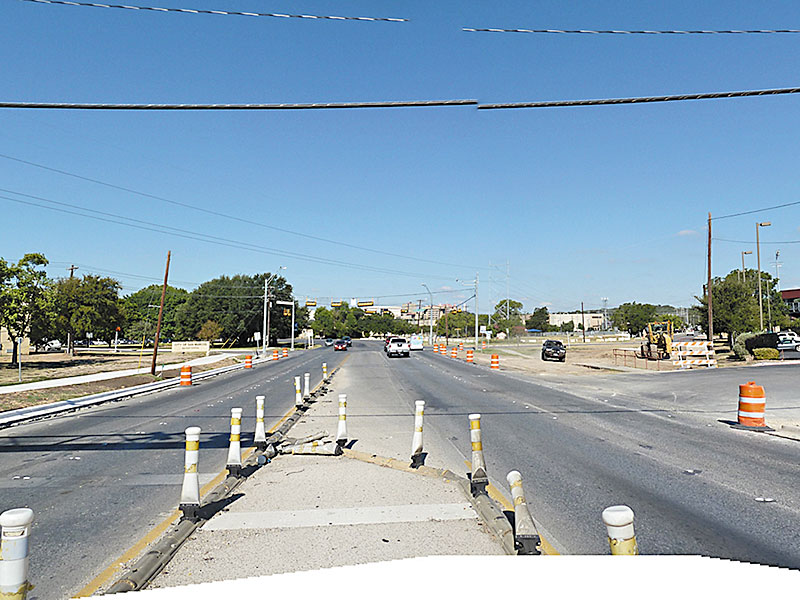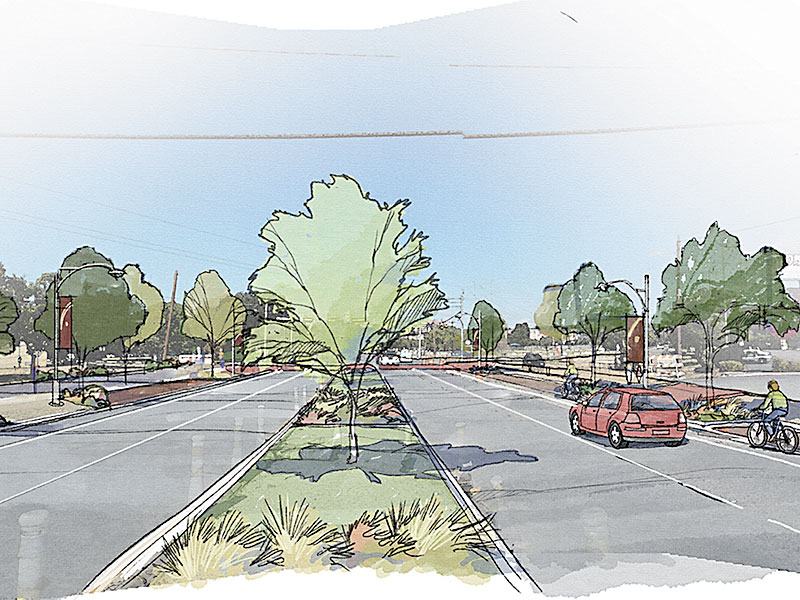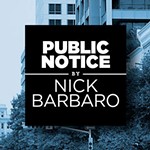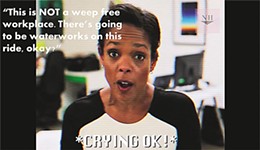CodeNEXT Prepares to Rewrite Austin
Seeks community feedback at series of events
By Katie Matlack, Fri., Nov. 13, 2015
In case you haven't heard, Austin is rewriting its Land Development Code. CodeNEXT is the name for the ongoing process of writing, testing, discussing, and finalizing the new code.
CodeNEXT planners have two aims. First, they must fix the current land development code, which, kind of like the Texas Constitution, is nearly indecipherable. And second, they must make the new document a set of rules that actively fosters the changes the city needs. That's the tricky part. Because changes the city needs were already laid out in Imagine Austin, the detailed vision of the Austin of 30 years from now which the city recently developed. But now comes the actual code that will "bring to life the community values of Imagine Austin." And the question of what people will and won't be able to do under the new code – the code that's meant to make it possible to build that future, Imagine-d Austin – is still up in the air.
And that's where you come in. After years of working with stakeholders in smaller groups, November is showtime for the CodeNEXT team, who are eager for citizens to come out Nov. 16-21 during "Sound Check" week. The idea is, you'll watch CodeNEXT planners and code consultants in action on Austin neighborhoods, as they test out how a draft code might actually apply. If you come weigh in on what's good and what's problematic, they say, you'll help ensure that the final updated LDC is as helpful and clear as possible to all Austinites.
What's Dysfunctional About the Current City Code?
Everything. Opticos Design (the consulting agency that leads the CodeNEXT process) published a Land Development Code Diagnosis last May, calling today's code structure and organization inconsistent, hard to understand, and hard to use, and also declaring that the existing 33 zoning districts it's based on are "ineffective in creating a high-quality, compatible built environment." They also said layers of extra regulations create confusion and "exponentially increase demands on the Property Development Review Board and other city departments" – with the result that the code approval now takes much longer, and costs much more, than it has to. Having a bureaucratic maze for a city code hinders small-scale incremental adaptive reuse projects as well as small local business growth – though CodeNEXT planners said some homeowners prefer "the maze" because it slows everything down. This doesn't stop people moving here and wanting to build, they said, but merely makes it only possible to afford making changes or building if you're rich.
City Planning Committee members have raked CodeNEXT leaders over the coals in recent weeks, for good reason – not sharing much about the draft code with the public before the Sound Check, and not being clear about the event's purpose (Are we making decisions about future code next week, or just having conversations about it?) makes it feel like they don't trust us to not overreact, and like they aren't showing us the first draft because they want to show us the final draft, along with cherrypicked input that gives us the illusion that we mattered. The sense we got was that next week's event is turnkey, and not something people will need to "study up" on to prepare for, and that it's not when things will be decided, but rather when conversations will be had that inform later decisions (though if this is the case, it would have been nice for that to have been spelled out for us clearly ... but we digress). CodeNEXT leaders do seem to be making an effort to "meet people where they're at": Sound Check is offering some bilingual translations, CodeNEXT has built a Spanish-language Facebook page, and at the event they'll be giving out bus passes. Perhaps the CodeNEXT team is starting to realize that their personal reputations as farsighted and capable planners are on the line here, along with Austinites' sense that they have actual input in the city's future.
Where Do I Go to Get Involved in CodeNEXT?
Thank goodness things are changing, right? Right – but in case we haven't been clear, the hay's not in the barn yet! For next week's "Sound Check" to be a success, according to CodeNEXT organizers, Austinites will have to come out to watch and comment as city of Austin staff plus Opticos Design test proposed standards out in seven different representative communities to ensure compatibility with Imagine Austin.
During Sound Check, you can attend "Brown Bag" sessions to learn more about specific elements of code, get overviews at the opening and closing sessions, or view workshop results during "Open Studio" and "Pin-Up" sessions. The "tests," CodeNEXT organizers say, will result in "a series of outcomes looking at things like what can be developed under current zoning, the scale of development that proposed structures might yield, and more."
To get a better sense of how the shape the code takes will affect different stakeholders, we polled people from 15 different walks of life, all of them sure to be affected by the new code. We asked them, "What kinds of things do you hope Austin's future land use code would take into consideration to best account for needs and goals that you, and others like you, might have?" Here's what they said.
Mary Pustejovsky, 36, software consultant, Crestview resident: "The very first week I moved here from Chicago, my 2-year-old daughter asked me 'Mommy, where's the sidewalk?' It was funny, and sad. I'm excited about CodeNEXT and the prospect for a better built form that is not so centered on the automobile. One of the biggest areas I'd like to see improvement is in commercial setbacks. For example, when my friend, who is blind, gets off the bus, he often has to cross a giant parking lot to get to a store. That is not safe or accessible."
Eva Hernandez-Simmons, 34, registered nurse, Northeast Austin resident: "We would like to see coding that incentivizes family-friendly housing. Otherwise, the impact will continue to be felt on our schools and resident continuity. We feel it's important for our neighborhood to continue to be a walking-friendly, family-friendly neighborhood with safe sidewalks, that feels safe, with ample parks and quiet evenings. We don't want to see our neighborhood overdeveloped with high rises and event spaces."
Abe Louise Young, 39, writer and activist, Govalle resident: "Women need affordable housing. It's the most critical and intense issue. Every new development should make a third of its units affordable to people at less than 50% of the mean family income. To serve women best, give every bus stop a shelter from sun and rain, a working water fountain and a light. Go back to metal bus schedule signs and ditch the QR code schedules that are unusable by anyone without a smartphone. Build sidewalks in all neighborhoods in the urban core – this is critical to protect women, children on foot or bikes, and people walking with infants in strollers."
Max Rangel, 68, retiree, Govalle resident: "Existing houses ought to be grandfathered. We can't keep up with them building these huge houses, pushing the tax rates way up. People can't afford these taxes. There's no cost-of-living increase. We're on a fixed income. They're pushing us out. There's no way we can compete."
Irvin Brown, 64, caregiver, Springdale resident: "It's a double standard. It's the haves and have-nots. Some people used to have chickens over here, at East Ninth. Then someone called it in [to the city]. But then, if you've got enough money, close by here, you can build a whole slaughterhouse."
Dave Cortez, 32, community organizer, Montopolis resident: "When thinking of land-use policy its nearly impossible to separate myself from acknowledging the many generations of brown-identified people who inhabited this land now known as Austin or Central Texas. As Austin has proved time and time again, colonizers have deemed this land as not for us. We've been isolated, segregated, displaced, and gentrified for decades and beyond dating back to the original theft and colonization of this land. I struggle to believe that a land use reform project like CodeNEXT, which is moved forward and carried by bureaucrats, property owners, developers, and others who benefit from and profit off of the displacement of black and brown people, stands to benefit marginalized communities. I hope I'm wrong and am open to hearing why I might be.
"I personally want to see a land use code incorporate the values, ideas, and policies put forward by leaders of color in Austin who presented neighborhood plans only to have them rejected. I want to the values of justice for marginalized communities and equity as centerpieces of a new land use code. We cannot espouse progress if a code is not structured to facilitate a process for working class communities of color to return to the city core, where we once lived for generations. Workforce housing and access to transit, healthy food, green space, quality schools, and essential social services are the highest priorities."
Jessica Eley, 33, engineer, Govalle resident: "Austin sits on a dividing line: On the west side is limestone rocky soil; on the Eastside, particularly near the river, we have a former flood plane and black-land prairie, where the soil is fertile. Building on this soil/land [in East Austin] means less water can leach into the soil, [and] instead of having the time to penetrate the soil to refill the local aquifer, it's channeled as runoff. The city code should take into account the soil of different neighborhoods, encourage building practices that take into account the ground it's built on."
Brent Sipes, 33, digital librarian, Govalle resident: "I think the city is doing a good job about developing bike tracks [enclosed bike lanes]. And I agree that they are the way to maximize regular bike use. Though, if you look at one of the pilot bike lanes, the one on the drag [Guadalupe across from UT], it is a mess of pedestrians loitering in the lanes and cars encroaching. The little flexible posts that serve to direct and deflect car traffic from the track are horribly maimed or missing, attesting to how little care is given to enforce maintaining a safe thoroughfare for bikes."
Carrie Kenny, 45, gallery owner/operator, East Cesar Chavez resident: "In addition to running the gallery, I have also been able to offer artists and art nonprofits such as Fusebox Festival and Forklift Danceworks affordable office space. This year, the valuation of the Prizer property went up by over 40 percent, and such dramatic increases in valuation, and therefore, taxes, will hinder my ability to offer much needed affordable space to artists. These increases have already significantly changed the nature of East Cesar Chavez and what kinds of businesses can afford to operate here. In addition to ensuring that Austin has affordable housing, we need to look at how unchecked property tax increases also negatively affect small neighborhood businesses."
Nicole Zinn, 48, owner, retail and online store, Travis Heights resident: "As a small-business owner, I wish that there were more incentives to ease the burden of growth for small businesses in Austin. To consider purchasing or building a building is daunting, because it may take many months to open. When your existence depends on maintaining all revenue streams, being closed for any length of time is not an option."
Nora Tyeklar, 32, UT Ph.D. student, Govalle resident: "My experiences with Cap Metro have been pretty good, but on certain lines, bus stops are sometimes still about a 15 to 20 minute walk from my final destination, or from my origin. In areas with which I'm not familiar, a sidewalk along that walking route may not be a guarantee. In high traffic areas this can be dangerous as you then have no choice but to walk along the side of the road or on the road itself. Also, Cap Metro fares are fairly affordable to non-student Austinites who rely on it on a daily basis. My hope is that they remain this way!"
Mechele Dickerson, 53, UT Law professor, Circle C neighborhood resident: "The main thing is to make sure whatever we're doing matches the way millennials are living. It's unlikely they'll be marrying at the same age, having kids at the same age, or keeping the same jobs as boomers, unless they change how they are. Millennials only stay in the same job for two or three years. There needs to be more affordable rental housing. It would be useful if the city recognized millennials don't want to commute. When boomers start turning over their big old homes, I'm not sure where the buyers are going to come from. Land use laws continue to have big lot requirements, zoning for certain lot sizes. We need to make sure homes built now match what the needs are going to be for the next 20 to 30 years."
Michael Cannatti, 52, patent attorney, Tarrytown resident: "Having seen previous [if less ambitious] code 'rewrites' usually skew the development rules in favor of more development [e.g., increasing density entitlements, eliminating appeal rights for neighbors] without increasing protections for our residential neighborhoods, I am concerned that the CodeNEXT work will result in more of the same. Imagine Austin is being used to guide the CodeNEXT process [yet] in many years of neighborhood development disputes, I have never seen Imagine Austin cited to support the residential neighbors. Instead, city planners routinely use selective citation of Imagine Austin provisions to support development intensity, never to support residential neighborhoods. When the outcome depends on the interaction between paid lobbyists advancing interests of developers and volunteer neighborhood representatives trying to protect the residential character of our neighborhoods, there is little doubt that this will turn out poorly for the neighbors."
Taylor Wilson, 24, development company president, Cuernavaca neighborhood resident: "I hope that Austin's future land use code takes an innovative approach to parking requirements and a reduction thereof in appropriate areas in close proximity to public transit and downtown. With the cost of land being high, developers are forced to take parking into subgrade parking garages rather than traditional surface parking lots. The cost of subgrade parking has a major impact and ultimate reduction of attainable housing."
Got something to say on the subject? Send a letter to the editor.












